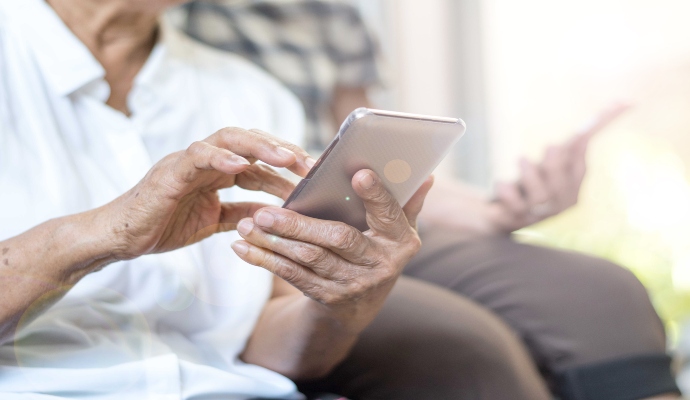Internet Use Gaps Among Medicare Patients Shrinking Across Segments
Study results show that internet use rates increased the most among Medicare patients with lower internet use, but disparities remain across demographic lines.

Source: Getty Images
- Gaps in internet use rates appear to be narrowing among Medicare beneficiaries, but disparities across demographic groups persist, impacting telehealth access, according to a study published in the Journal of the American Geriatrics Society.
The digital divide became increasingly apparent as digital healthcare adoption and use skyrocketed during the COVID-19 pandemic. The digital divide is defined as the “economic, educational, and social inequalities between those who have computers and online access and those who do not.” During the pandemic, various efforts were made to close the digital divide, including expanding broadband coverage, providing free or subsidized internet plans, and subsidizing technology for low-income households.
Researchers from Rand Corporation and the Centers for Medicare & Medicaid Services set out to assess the changes in internet use among Medicare beneficiaries in light of the above efforts during the pandemic.
They examined data from 823,262 respondents to the 2019, 2021, and 2023 Medicare Consumer Assessment of Healthcare Providers and Systems Survey. They used the data to calculate the proportion of Medicare beneficiaries who reported ever using the internet at home each year, both overall and by person-level characteristics, after adjusting for sex, self-reported race and ethnicity, and age.
In 2023, 77.1 percent of Medicare beneficiaries used the internet at home, up from 72.7 percent in 2021 and 68.6 percent in 2019.
Researchers found that increases in adjusted rates of internet use were largest for Hispanic Medicare beneficiaries responding in Spanish, with an 18.1 percentage point jump from 2019 to 2023. Internet use rates increased by 11.6 percentage points among Hispanic beneficiaries responding in another language and by 16.6 percentage points among Asian American and Native Hawaiian or other Pacific Islander, American Indian, Alaska or Native, and Black beneficiaries. The increase in internet use rates was the smallest for White Medicare beneficiaries at only 7.4 percentage points.
Still, White people covered by Medicare had the highest internet use rates overall in 2023 (80.9 percent), followed by Asian American and Native Hawaiian or other Pacific Islander (76.3 percent), Black (62.3 percent), and American Indian, Alaska or Native beneficiaries (54.3 percent).
Further, internet use rates were low overall among Hispanic beneficiaries who responded to the survey in Spanish (46.1 percent). Among Hispanic beneficiaries who responded in another language, primarily English, internet use rates were 65.4 percent in 2023.
The study also shows that internet use increased more among Medicare beneficiaries 85 and older compared with those between 65 and 69, among beneficiaries with limited income than their higher-income peers, and among those with ‘fair’ or ‘poor’ self-rated health than those with ‘excellent’ or ‘very good’ self-rated health.
However, in 2023, Medicare beneficiaries younger than 69, those with higher incomes, and those who rated their health ‘excellent’ or ‘very good’ had far higher rates of internet use overall than their counterparts.
The researchers concluded that racial or ethnic minorities, low-income, less healthy, Spanish-preferring, and older Medicare beneficiaries may be less likely to have access to telemedicine because of unreliable internet access.
About 42 million Americans don’t have access to terrestrial broadband internet, according to BroadbandNow, an independent research firm.
Lack of internet connectivity is one of the critical barriers to telehealth access nationwide. A 2021 survey conducted by the Bipartisan Policy Center showed that 45 percent of 1,766 adults cited access to technology, including broadband and computers, as a barrier to telehealth. Additionally, a study published in 2021 revealed that rural residents had inferior internet access and, thus, lower odds of using digital health tools for communicating with providers.
However, recent research published in JAMA Network Open questions the notion that access to high-speed internet and telehealth helps close healthcare utilization gaps.
The researchers studied changes in telehealth and in-person primary care visits among adult Wisconsin Medicaid beneficiaries across three periods between June 1, 2019, and December 31, 2021.
They found that “telehealth and HIS [high-speed internet] may boost PC [primary care] receipt, but will generally not close utilization gaps.”
